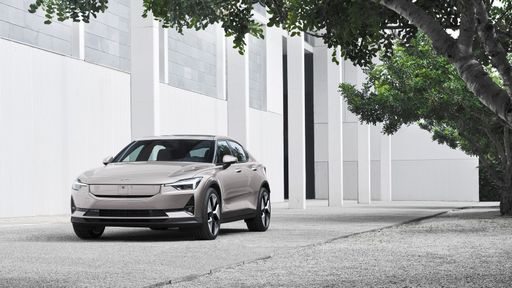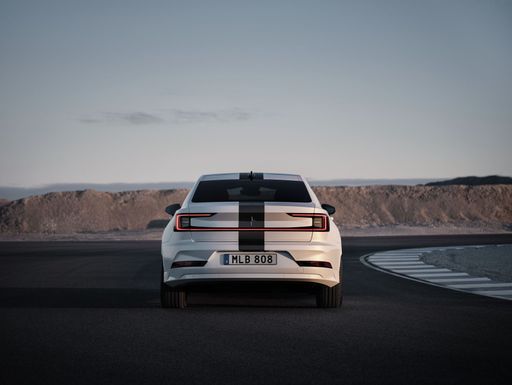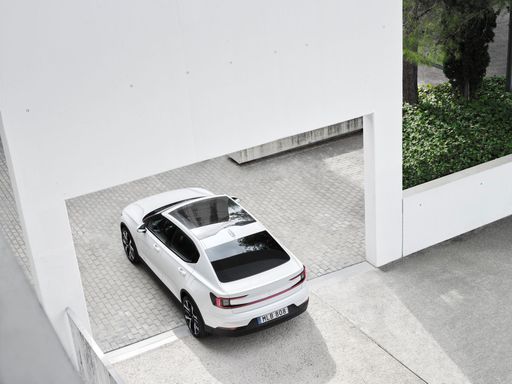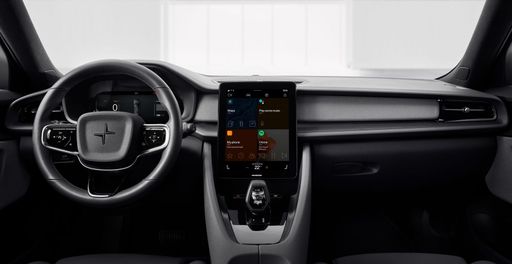Polestar 2 vs Hyundai IONIQ 9 – Which one offers the better deal?
Two cars, one duel: Polestar 2 meets Hyundai IONIQ 9.
Which one wins in performance, efficiency and value for money? Find out now!
Costs and Efficiency:
Price and efficiency are often the first things buyers look at. Here it becomes clear which model has the long-term edge – whether at the pump, the plug, or in purchase price.
Polestar 2 has a distinct advantage in terms of price – it starts at 42000 £, while the Hyundai IONIQ 9 costs 58700 £. That’s a price difference of around 16723 £.
In terms of energy consumption, the advantage goes to the Polestar 2: with 14.80 kWh per 100 km, it’s distinct more efficient than the Hyundai IONIQ 9 with 19.90 kWh. That’s a difference of about 5.10 kWh.
As for range, the Polestar 2 performs minimal better – achieving up to 659 km, about 39 km more than the Hyundai IONIQ 9.
Engine and Performance:
Power, torque and acceleration say a lot about how a car feels on the road. This is where you see which model delivers more driving dynamics.
When it comes to engine power, the Polestar 2 has a to a small extent edge – offering 476 HP compared to 428 HP. That’s roughly 48 HP more horsepower.
In acceleration from 0 to 100 km/h, the Polestar 2 is noticeable quicker – completing the sprint in 4.20 s, while the Hyundai IONIQ 9 takes 5.20 s. That’s about 1 s faster.
In terms of top speed, the Polestar 2 performs barely noticeable better – reaching 205 km/h, while the Hyundai IONIQ 9 tops out at 200 km/h. The difference is around 5 km/h.
There’s also a difference in torque: Polestar 2 pulls minimal stronger with 740 Nm compared to 700 Nm. That’s about 40 Nm difference.
Space and Everyday Use:
Whether family car or daily driver – which one offers more room, flexibility and comfort?
Seats: Hyundai IONIQ 9 offers evident more seating capacity – 7 vs 5.
In curb weight, Polestar 2 is noticeable lighter – 2015 kg compared to 2594 kg. The difference is around 579 kg.
In terms of boot space, the Polestar 2 offers slightly more room – 405 L compared to 338 L. That’s a difference of about 67 L.
In maximum load capacity, the Hyundai IONIQ 9 performs decisively better – up to 2419 L, which is about 1324 L more than the Polestar 2.
When it comes to payload, Hyundai IONIQ 9 clearly perceptible takes the win – 643 kg compared to 421 kg. That’s a difference of about 222 kg.
Who comes out on top?
Overall, the Polestar 2 shows itself to be edges ahead and secures the title of DriveDuel Champion.
It convinces with the more balanced overall package and proves to be the more versatile choice for everyday use.

Polestar 2
Polestar 2
Der Polestar 2 beeindruckt mit seinem klaren, skandinavischen Design und einer hochwertigen Verarbeitung, die sowohl innen als auch außen zu sehen ist. Besonders auffallend ist das futuristische Cockpit mit einem innovativen Infotainment-System, das auf Android basiert und nahtlose Konnektivität bietet. Zusätzlich bietet das Modell ein exzellentes Fahrgefühl mit dynamischen Fahreigenschaften, das selbst anspruchsvolle Fahrer begeistert.
details @ Polestar
@ Polestar
 @ Polestar
@ Polestar
 @ Polestar
@ Polestar
 @ Polestar
@ Polestar
Hyundai IONIQ 9
The Hyundai IONIQ 9 is a bold step forward in the automotive world, combining cutting-edge electric technology with a sleek and modern design. This model stands out with its spacious interior and advanced features, ensuring both comfort and convenience for drivers and passengers alike. As Hyundai pushes the envelope in eco-friendly innovation, the IONIQ 9 represents the future of sustainable driving with its impressive range and performance capabilities.
details

|
|
|
|
|
Costs and Consumption |
|
|---|---|
|
Price
42000 - 57400 £
|
Price
58700 - 74400 £
|
|
Consumption L/100km
-
|
Consumption L/100km
-
|
|
Consumption kWh/100km
14.8 - 16.8 kWh
|
Consumption kWh/100km
19.9 - 20.6 kWh
|
|
Electric Range
554 - 659 km
|
Electric Range
600 - 620 km
|
|
Battery Capacity
78 kWh
|
Battery Capacity
110 kWh
|
|
co2
0 g/km
|
co2
0 g/km
|
|
Fuel tank capacity
-
|
Fuel tank capacity
-
|
Dimensions and Body |
|
|---|---|
|
Body Type
Sedan
|
Body Type
SUV
|
|
Seats
5
|
Seats
7
|
|
Doors
5
|
Doors
5
|
|
Curb weight
2015 - 2188 kg
|
Curb weight
2594 - 2689 kg
|
|
Trunk capacity
405 L
|
Trunk capacity
338 L
|
|
Length
4606 mm
|
Length
5060 mm
|
|
Width
1859 mm
|
Width
1980 mm
|
|
Height
1473 - 1479 mm
|
Height
1790 mm
|
|
Max trunk capacity
1095 L
|
Max trunk capacity
2419 L
|
|
Payload
375 - 421 kg
|
Payload
586 - 643 kg
|
Engine and Performance |
|
|---|---|
|
Engine Type
Electric
|
Engine Type
Electric
|
|
Transmission
Automatic
|
Transmission
Automatic
|
|
Transmission Detail
Reduction Gearbox
|
Transmission Detail
Reduction Gearbox
|
|
Drive Type
All-Wheel Drive, Rear-Wheel Drive
|
Drive Type
Rear-Wheel Drive, All-Wheel Drive
|
|
Power HP
272 - 476 HP
|
Power HP
218 - 428 HP
|
|
Acceleration 0-100km/h
4.2 - 6.4 s
|
Acceleration 0-100km/h
5.2 - 9.4 s
|
|
Max Speed
205 km/h
|
Max Speed
190 - 200 km/h
|
|
Torque
490 - 740 Nm
|
Torque
350 - 700 Nm
|
|
Number of Cylinders
-
|
Number of Cylinders
-
|
|
Power kW
200 - 350 kW
|
Power kW
160 - 315 kW
|
|
Engine capacity
-
|
Engine capacity
-
|
General |
|
|---|---|
|
Model Year
2024
|
Model Year
2025
|
|
CO2 Efficiency Class
A
|
CO2 Efficiency Class
A
|
|
Brand
Polestar
|
Brand
Hyundai
|
Is the Polestar 2 offered with different drivetrains?
The Polestar 2 is offered with All-Wheel Drive or Rear-Wheel Drive.
The prices and data displayed are estimates based on German list prices and may vary by country. This information is not legally binding.
